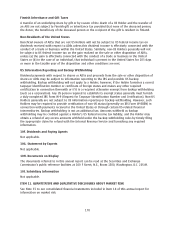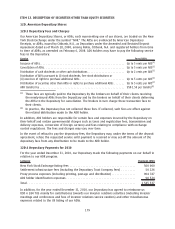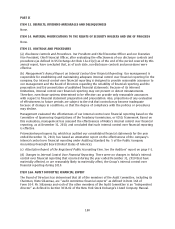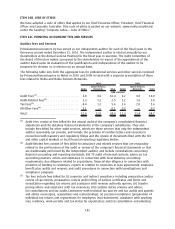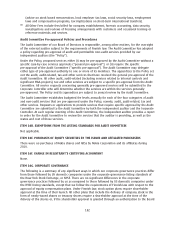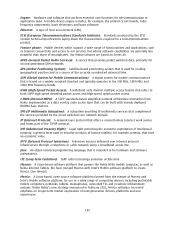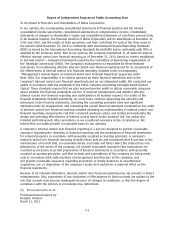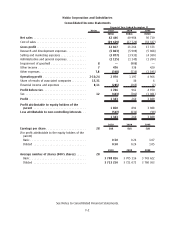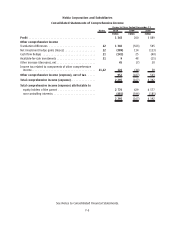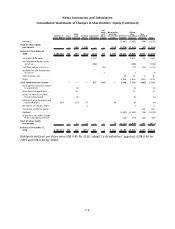Nokia 2010 Annual Report Download - page 187
Download and view the complete annual report
Please find page 187 of the 2010 Nokia annual report below. You can navigate through the pages in the report by either clicking on the pages listed below, or by using the keyword search tool below to find specific information within the annual report.Mobile device:
A generic term for devices that are used for mobile communications over a cellular
network.
Mobile phone:
A generic term for mobile devices whose software capabilities are generally less
powerful than those of smartphones. Nokia’s mobile phones are based on Series 30, a non
programmable operating system that powers our most costeffective voice and messaging phones,
and Series 40, which supports a wider range of different functionalities and applications, such as
Internet connectivity.
Mobile products:
A term capturing our broader offering, including mobile phones and smartphones
as well as the services that can be accessed with them.
Multiradio:
Able to support several different radio access technologies.
NGOA (Next Generation Optical Access):
Future telecommunications system based on fiber optic
cables capable of achieving bandwidth data rates greater than 100 Mbps.
OFDM (Orthogonal FrequencyDivision Multiplexing):
A technique for transmitting large amounts
of digital data over a radio wave. OFDM works by splitting the radio signal into multiple smaller
subsignals that are then transmitted simultaneously at different frequencies to the receiver.
Open source:
Refers to a program in which the source code is available to the general public for
use and modification from its original design free of charge.
Operating system (OS):
Software that controls the basic operation of a computer or a mobile
device, such as managing the processor and memory. The term is also often used to refer more
generally to the software within a device, including, for instance, the user interface.
Ovi:
A brand under which we have integrated many of our Internet and mobile services.
Packet:
Part of a message transmitted over a packet switched network.
Platform:
Software platform is a term used to refer to an operating system or programming
environment, or a combination of the two.
Series 30:
A software platform that powers our most costeffective voice and messaging phones.
Series 40:
A software platform that powers the majority of our mobile phone models and supports
different functionalities and applications, such as Internet connectivity.
Smartphone:
A generic category of mobile devices with sophisticated software and embedded
services. Smartphones can run applications such as email, web browsing, navigation, social
networking and enterprise software, and can also have builtin music players, video recorders, and
other multimedia features. Software capabilities are generally more powerful in smartphones than in
mobile phones (See
Mobile phone
).
Symbian:
A software platform which supports a wide array of functionalities, and provides
opportunities for the development of sophisticated applications and content by third parties. Under
Nokia’s new strategy announced on February 11, 2011, we plan to transition to Windows Phone as
our primary smartphone platform. During this transition we will continue to leverage our investment
in Symbian for the benefit of Nokia, our customers and consumers as well as developers.
TDLTE (time division long term evolution):
An alternative standard for LTE mobile broadband
networks
TDSCDMA (time division synchronous code division multiple access):
An alternative 3G
standard.
Transmission:
The action of conveying signals from one point to one or more other points.
VDSL (very high bit rate digital subscriber line):
A form of digital subscriber line similar to
asymmetric digital subscriber line (ADSL) but providing higher speeds at reduced lengths.
186




